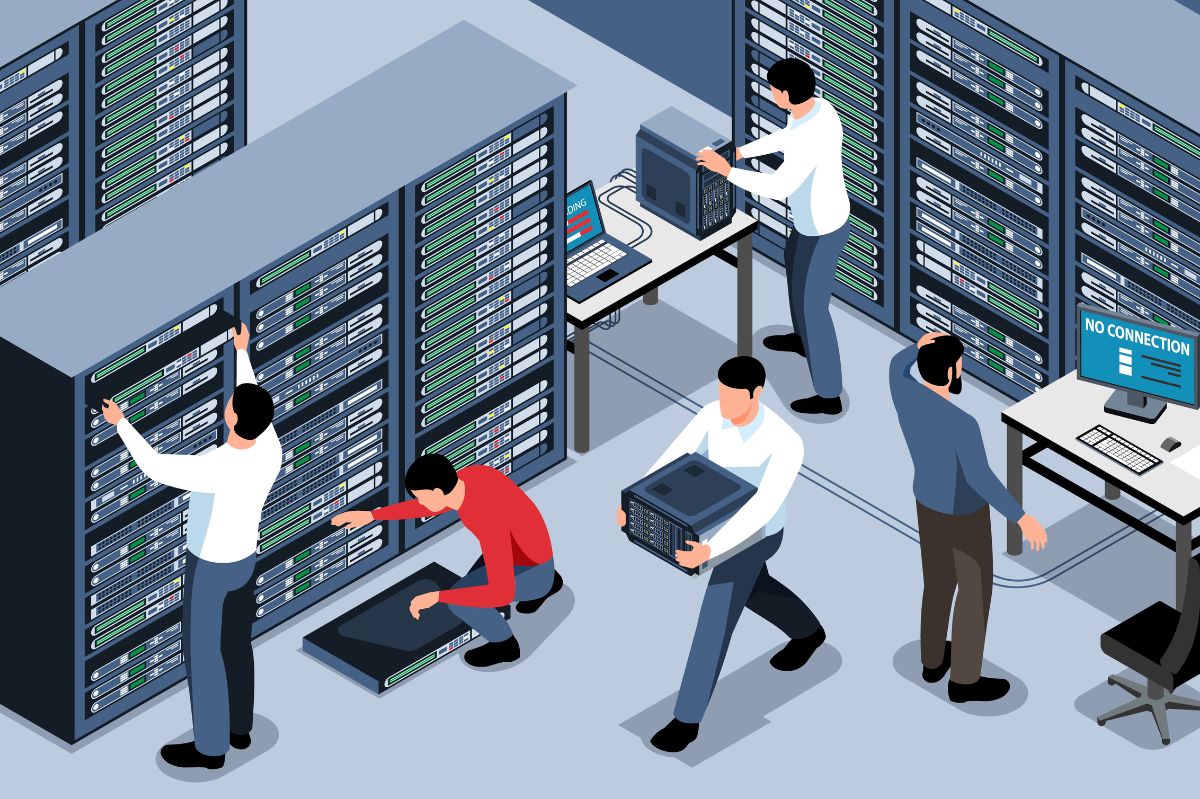Industry 4.0, digital transition, and cloud computing are certainly among the main themes contributing to refocusing attention on data centers. And the rapid and widespread diffusion of remote working has further increased interest. As a result, several companies are considering designing a new data center or modernizing the one they already have. But what to focus on to be sure of making a forward-looking investment?
Table of Contents
An opportunity for those who have to design a data center
The watchword for 2020 was resilience, a term that has often been used as a synonym for agility, flexibility, and resistance. Three words that effectively describe the typical characteristics of the cloud. And it is precisely the cloud that many companies resorted to last year to retool themselves in order to survive the Covid-19 pandemic. However, the pandemic has only accelerated the shift to new programmable and software-defined architectures and infrastructures in many situations.
In many cases, the on-premise cannot be abandoned for applications that cannot migrate to the cloud or for data that must only be managed locally. In these situations, those who find themselves designing a new data center or modernizing an existing one must certainly consider the possibility of creating hybrid solutions in which they can coexist on-premise, to face the need for larger, faster, faster, and ready-to-scale infrastructures. Only in this way can those levels of flexibility and adaptation to the new needs imposed by the current economy be achieved. And on the cloud, such as HPE GreenLake.
Manage IoT data “on edge.”
According to Forrester forecasts, by 2025, 55% of the world’s data will be generated by IoT (Internet of Things) devices. As businesses adopt smart devices at their edge, the need for reliability, speed, and connectivity will become ever more urgent. These aspects must certainly play an important role in designing a data center. In fact, it will be necessary to foresee being able to operate where the data is located and no longer only in the central office.
This will be further strengthened with the affirmation of 5G technology. There will certainly be new alliances and investments in enterprise, mobile and wired networks, and a wide variety of edge data centers, small and large, will emerge. Intelligent and automated software-defined networks and interconnections will become as important as the physical infrastructure. Availability, sustainability, and energy efficiency will be critical in meeting the power requirements of edge data centers. The goal must be to enable real-time access to products, services, and information from anywhere.
Automation and remote monitoring
The importance of automation for edge data centers has been discussed. Indeed, again, the pandemic accelerated the need to make systems less dependent on human intervention. In fact, the need for data center operators to prioritize the health of their operations teams has seen the multiplication of situations where maintenance takes place without contact remotely. A recent survey by the Uptime Institute found that 73% of data center managers plan to increase their use of automation as a result of the pandemic. A third of them expect hiring challenges will result in smaller operations teams, even as server volume continues to climb. The result, according to Uptime, will be the emergence of “smarter data centers .” It goes without saying, therefore, that artificial intelligence will play an important role in their management, a clear indication for those who have to design a data center.
Not only. Anyone who has to design a new data center today can also have an infrastructure on-premise that does not require updating and maintenance. These activities can be devolved to external partners who take care of them by providing a fully managed service, thus allowing the corporate IT team to free up time to devote to value-added activities and reduce the costs and necessary skills.
Energy sustainability and energy accumulators
For years, IT operators have been able to claim environmental progress based on small steps (often incremental and relatively inexpensive) or achieved by adopting latest technologies that, in some way, could “feed themselves.” But controls have become more demanding: regulators and customers expect digital infrastructure operators to provide ever more concrete and detailed evidence of reductions in coal consumption, water savings, and significant energy savings. All of this, of course, while maintaining, if not even improving, resilience. Therefore, designing a data center today also means paying particular attention to all aspects related to sustainability and new solutions. Google and Switch are leading the way by using large lithium-ion batteries to be used as energy storage to power their data centers and address the “power” shortage that can, for example, be found in photovoltaics when the panels are not illuminated by the Sun. These are the first projects, but the road is marked.
Also Read : Corporate Data Backup: Restart Immediately, Without Unnecessary Breaks







